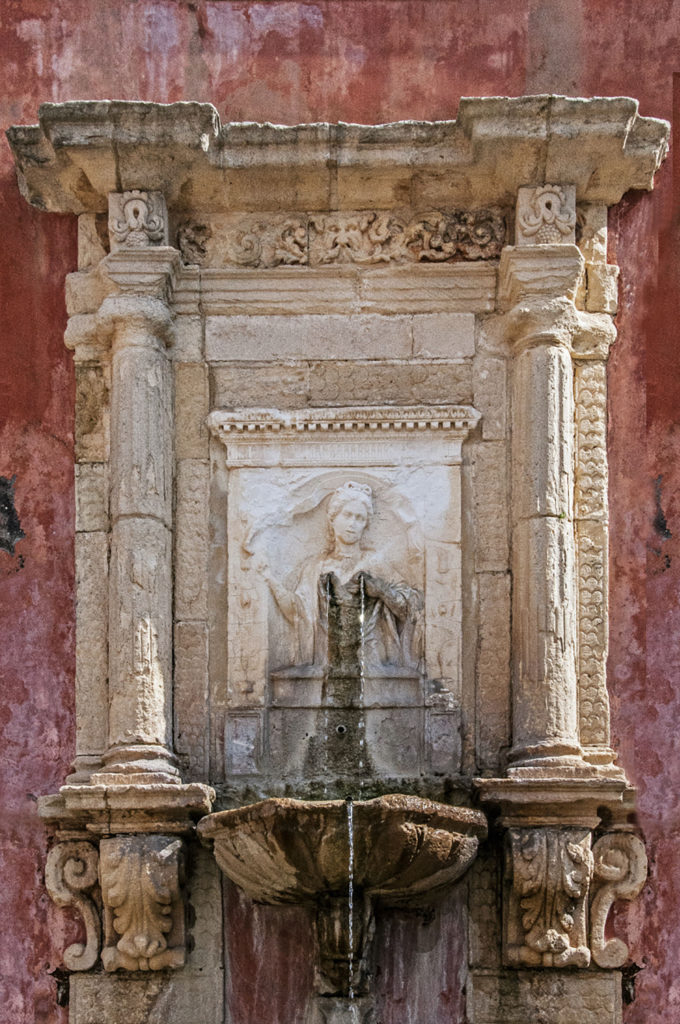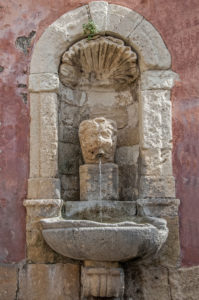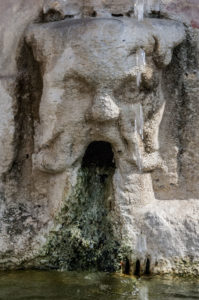Inside the courtyard of the Barresi-Branciforte castle there is the Fontana della Zizza (Zizza Fountain), dating back to 1607, which is the final part of the water mains.
 The rich family was a great promoter of public works. As a matter of fact, it was responsible for the construction of the aqueduct to channel the spring in the Zizza district to the castle, where the fountain is maintained and used freely by the community.
The rich family was a great promoter of public works. As a matter of fact, it was responsible for the construction of the aqueduct to channel the spring in the Zizza district to the castle, where the fountain is maintained and used freely by the community.
It was the first source of public drinking water in the town, an event of great importance at the time.
This work, attributed to
Giandomenico Gagini
, is located on a terraced wall and inserted in an
aedicula
with half columns, supported by corbels which frame the marble bas-relief of the girl Zizza, from whose breasts the water flows.



